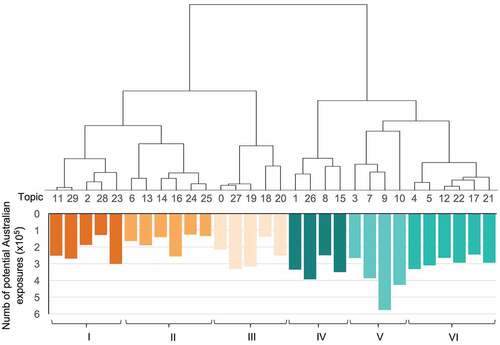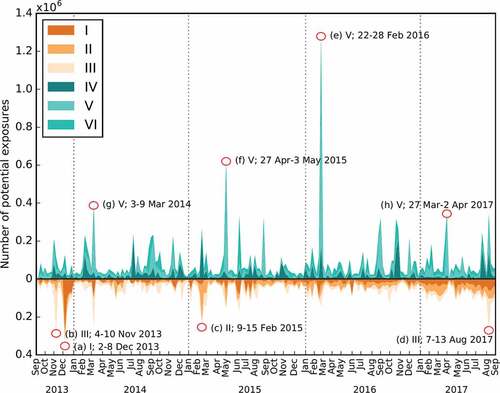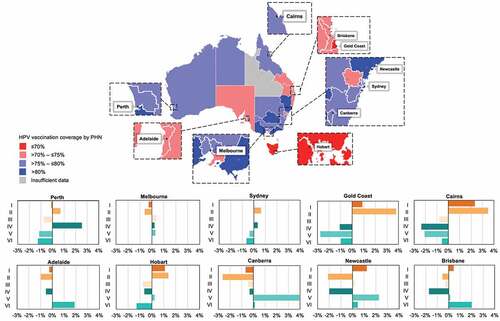Figures & data
Table 1. Models of HPV vaccination coverage for 31 Twitter-derived topic exposure and 5 socioeconomic factors in 25 combined Primary Health Network regions in Australia.
Table 2. Topics group descriptions and total potential exposure counts.
Figure 1. The hierarchical structure of topics determined from the set of intrusion tests performed over the 30 topics (Appendix 1), and included in one of 6 groups (). Exposure counts represent the total number of unique Australian Twitter users (of those localised to one of the 25 geographical regions) who may have been exposed to tweets from that topic. Orange groups tend to include mostly negative topics and cyan groups tend to include mostly positive topics. Differences in colour were used to denote groups across figures.

Figure 2. Potential exposures among Australian Twitter users per week in the period 6 September 2013 to 1 September 2017. Peaks correspond to (a) Australian research showing cervical cancer risk was reduced; (b) Canadian and Australian research showing cervical cancer risk was reduced; (c) Reduction in cervical cancer risk in the United States; (d) discussions of coverage rates in Australia and reduction in risk in New Zealand; (e) research showing that one dose may be enough; (f) debates about the representation of HPV vaccines on a television show hosted by Katie Couric; (g) responses to the reversal of a false balance story written in the Toronto Star newspaper; and (h) videos and stories of adverse events and harm.

Figure 3. Examples of topic exposure within individual cities in Australia by topic group (I-VI, inset), where bars represent the city-level difference in proportional exposure to each of the 6 topic groups relative to proportional exposure for all Australian Twitter users. The map illustrates differences in HPV vaccine coverage (population-weighted 3 dose completion aggregated for female and male adolescents) across the 31 Primary Health Networks (PHNs).

